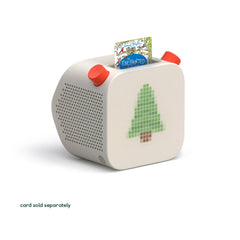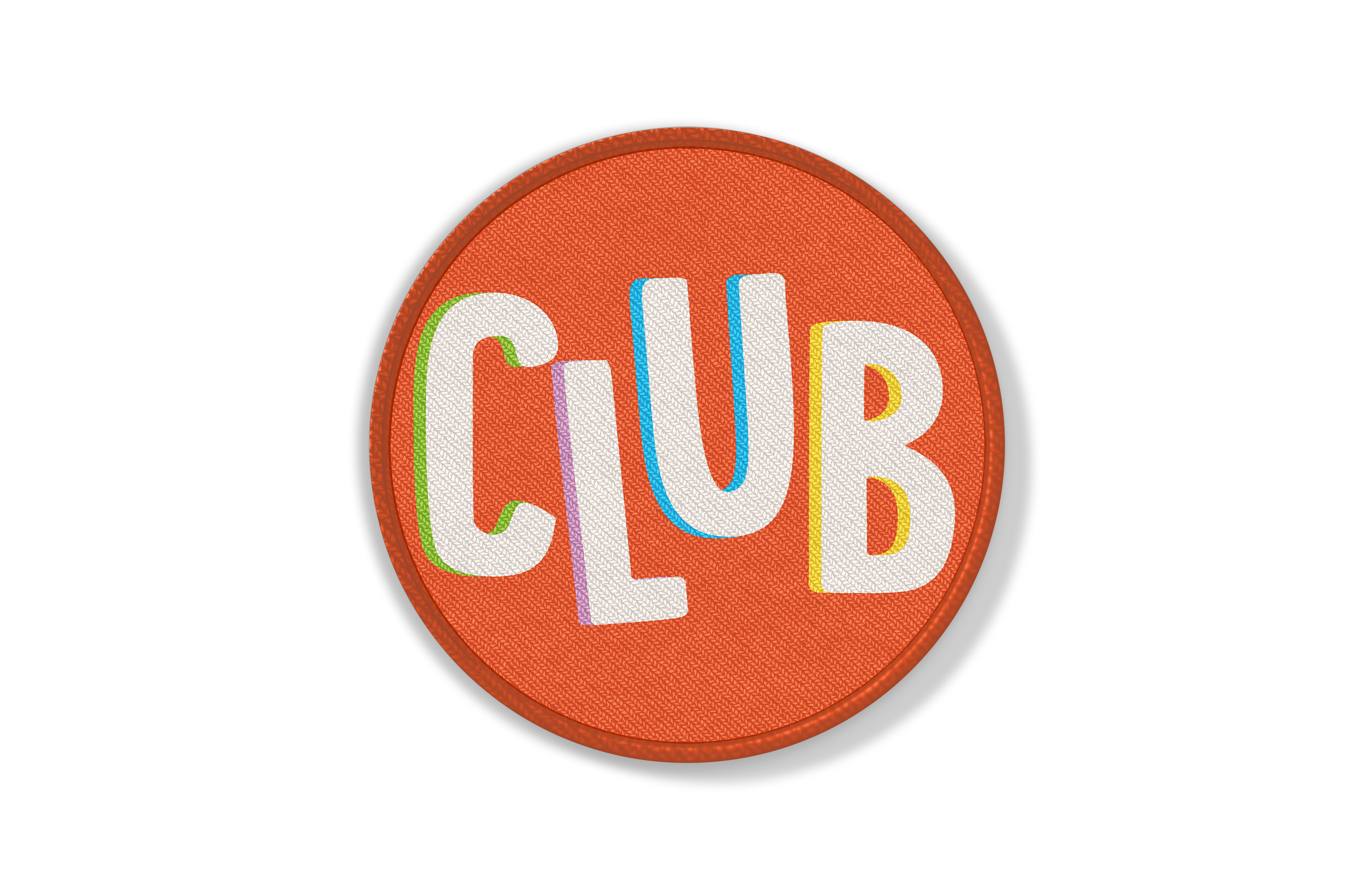Mop Rides the Waves of Life | An Interview with Jaimal Yogis
As we carry on celebrating kids' mindfulness content on Yoto, we spoke to the award winning author, father of three and mindfulness expert, Jaimal Yogis, about mindfulness during a pandemic; mindfulness for kids; and his new book "Mop Rides the Waves of Life".
Hi Jaimal, we’re so excited to chat with you about your new book! What can you tell us about Mop Rides the Waves of Life?
Mop is a kid with a mop of curly hair who feels happy and free when he’s surfing, but back on land things don’t always flow as easily. (I may have a similar problem.) During his school week Mop finds himself leaping from one angry or disappointed reaction to another - he pushes Toby, he kicks Izzy’s blocks - until his surfer mom takes him to the beach. Before they dive into the waves, she slips in some mindfulness lessons, basically showing Mop how emotional waves and thought waves move like the ocean - always changing. By focusing on his breathing, Mop learns he can enjoy the good waves (joy, love) and let the difficult ones (anger, shame) cruise by. And when he doesn’t let the bad ones cruise by, Mop learns that that’s ok too. Stormy waves are natural. And falling is the best way to learn. Mop thinks “riding the waves of life” is pretty hokey at first, but he’s pleasantly surprised when he Izzy teases him the next day at school and he’s able to pause, breathe, and make a better choice.
You’ve written a lot about mindfulness, “zen” and surfing, but for an adult audience. Why did you want to write a mindfulness book for kids?
I have human children now, but sometimes I think of my books like my children too (maybe because they take so long to raise) and Mop was not a planned child. One of the things I love to do, which I suppose you could call a mindfulness activity, is doodle. And being a surfer of course I love to draw waves. A few years back I found myself doodling this curly haired stick figure a lot. And since he looked like he had a mop on his head I called him Mop. Something about drawing him made me happy, and the black and white images reminded me a little of zen calligraphy. Those doodles evolved into a draft of the Mop book without a whole lot of planning. It was one of those rare “follow your bliss” projects where the bliss led me right up to finishing it. The publisher then connected to artist Matt Allen, the illustrator, who did an amazing job. But I still really love that stick figure Mop. He feels like the creator of the book.
Anyhow, once it was done, I realized there were all these great benefits of being able to communicate the tools I discuss in my grown-up books about zen, mindfulness, and the ocean to my own kids. And I’m sure that was an unconscious motivation. But, pun intended, Mop just kinda flowed onto the page.
Kids are tough critics! How have your youngest readers responded to Mop’s advice to ride the good waves and leave the bad?
If there are kids out there who don’t like Mop they’ve been nice enough not to tell me :) And the response has been really incredible. I’ve gotten quite a few letters from parents saying Mop is their child’s favorite book, as well as letters from teachers saying that Mop is the ideal tool for their social emotional curriculum. One mom just wrote me because her twin boys had moved to the US from France and one of them was crying for an hour per-day when school started. When they picked up Mop, something shifted for him and, instead of crying, he started going in his room with the Mop book and just reading it over and over. Now they have the boys taking surfing lessons too. Stories like that are really special to hear. They remind me how powerful books can be. And as for my boys, they adore Mop and are constantly giving me ideas. But they’ve kind of over-dosed on the first book understandably. They’ve been reading my drafts for over a year! Fortunately there are more Mop books on the way
You have three boys: what does their mindfulness practice look like?
They are four, seven, and eight year-old boys - with lots and lots of wild energy (and wild hair too). They’ll placate me sometimes and sit still for about a minute and count their breath. Or they enjoy the Mop YouTube meditations I’ve made (probably just an excuse to get the iPad) but they don’t really want to do still meditation at this age and I think that’s fine. Kids their age are already really present and we parents can learn a lot from their open-ended spontaneous play, I think. That’s a kind of creative presence that I think we forget how to enter as grown ups.
I think the best way to teach children mindfulness and emotional regulation is just to demonstrate it. For example, I’m just like any parent and sometimes lose my cool when they’re fighting or not listening (quite often) but I do my best when that happens to take some breaths myself, then apologize and say, “hey guys, I’m sorry I shouted there. I was angry because it’s not safe to be fighting, and I don’t want you guys to get hurt. But I could’ve said that without shouting.” They seem to appreciate that and be more willing to apologize themselves when they get out of control.
I think it’s really important when teaching mindfulness to remind kids that all emotions are ok and natural. We’re not trying to squash difficult emotions. We’re just trying to become aware of them, and find a bit of space from them so we can choose how we react to those big feelings.
Also on the demonstration level, I try to wake up before them and do my meditation practice. One of them often finds me and comes sit on my lap for a moment. I make a point when that happens of just staying quiet for a minute and staying with my breath, and when they ask why I like just sitting there with no television or book or anything, I talk to them about how enjoyable it can be to calm your mind by just feeling the sensation of your breath. I think that plants a good seed.
And lastly, when they’re fighting with each other or overheated about something, instead of argue about it while they’re in the “red zone,” my wife Amy and I often suggest that they separate themselves from whatever is making them angry (usually one of their brothers) and take some breaths. They always resist doing that - like any humans, they want to win the argument while they’re heated up - but once they do go outside or in another room, they almost always come back refreshed. I hope that’s also teaching them to observe how emotions pass like waves, and that we really do have a choice.
Has mindfulness helped your family during these challenging times?
Oh yeah. Just like exercise, it has been hugely necessary to navigate the stress of the pandemic. When we first went into lockdown and the schools closed, Amy and I both happened to be in the middle of work deadlines and now we were managing three boys on zoom classes! It was nuts. The boys were fighting like crazy. Amy and I were snapping at each other. Tensions were way too high. I was desperate to find anything that wasn’t giving them another screen (we didn’t yet have a Yoto player, which they love) and I downloaded the Mop coloring book and left it out for the boys. They loved coloring the picture of Mop diving peacefully under the wave that says “fear, sadness, anger.” I hung their drawings up around the house and whenever they got angry, I’d point to one of the drawings and say, “you’re in an angry wave. It’s going to pass.” It worked surprisingly well. Of course, then when Amy and I got angry, they started saying it to us too.
One moment really stuck with me. Our eight-year-old Kai was furious at his brother and shouted back to me, “It’s not going to pass! I’m going to feel this way forever.” “Really? Forever?” I said. He looked at me and cracked a smile. Then we both started laughing and the tantrum broke.
What advice would you give to parents beginning a mindfulness practice for themselves or their children?
If you’re beginning a mindfulness practice for yourself, I would say number one, be patient with yourself and don’t expect to be “good” at it. The first thing everyone notices when they sit down and try to focus on, say, breathing - the most common technique but certainly not the only one - is that it seems nearly impossible. Your mind doesn’t want to stop planning, ruminating, bouncing around, judging. The waves are relentless. No space between them. And that’s just fine. That means you’re alive and human and living a busy, stimulated life. There’s nothing “wrong” with you. And you’re not bad at mindfulness as a lot of people assume they are.
So then the trick is just doing it every day and building a habit. And whether you can carve our five minutes a day or an hour per-day, just keep gently moving your attention back to the sensation of your breath - counting or a mantra works well for a lot of people - and don’t judge yourself for having an active mind or for not having a blissful time. Eventually, you will find really peaceful moments when your mind clears and your breath is super calm or even blissful, but those moments pass just like the difficult feelings do. The point of mindfulness practice is not to create any special mental state. The point is to learn to be with whatever comes up inside yourself in a more spacious, patient non-judgmental way.
I also really recommend having a routine and creating a good, clean space to practice. We’re creatures of habit and that makes it easier.
Having to stay indoors has made many people re-evaluate the importance of time spent outside - in nature, if you’re lucky! As an avid “outdoorsman”, what good can time spent outdoors do for our mental health?
Yeah, there’s lots of data now that shows how beneficial being in natural open spaces is for people - lower stress, feelings of wholeness and connectedness, happiness, awe. These all increase when we get time outside. Nature Deficit Disorder is absolutely a real thing.
There’s a lot of neuroscientific research happening on why nature is so beneficial for our wellbeing. I’ve seen some interesting research saying that the complex patterns of forests and oceans stimulate areas of the brain that don’t light up as frequently in urban areas, areas of the brain that help us get out of our usual planning, language modes. But the why nature is healing doesn’t matter so much for us laypeople. We just have to know that it works - and then get outside! As a parent, I find there’s really nothing better than getting our family to the beach or a river or a lake. I notice our boys compete less and fight less. They find themselves in open-ended, creative sorts of games more than they do inside - floating sticks down the stream or making up plays or just watching bugs for hours. My layman analysis is that our minds just start to mimic and absorb the surroundings, and when you go into a beautiful, spacious environment where the air is clear, your mind feels beautiful and spacious.
Of course I’m biased but I think surfing is a unique cocktail of good stuff because you’re not only in a gorgeous environment. You’re also getting exercise, plus you get to play, plus you get all the dopamine release that comes with a little bit of adrenaline and challenge. It’s no wonder people build their whole lives around it. But there are lots of other activities like rock climbing or skiing or hiking that you can get a similar feeling from.
Finally, what exciting things do you have planned for the rest of the year?
Well, regarding Mop, illustrator Matt Allen and I will be wrapping up the second book in the series, Mop Rides the Waves of Change. I couldn’t be more excited about this one because the story ties in my other passion, sustainability. Basically Mop and his friends get really angry about all the plastic on their local beach and how it’s hurting animals. At first their anger is causing more problems. So they try to figure out how to transform anger into a positive action - in this case a clean the beach party. Other than that, we are just going to be riding out the wild waves of 2020 - expecting surprises and lessons :)



